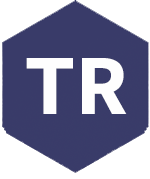
GenCorp followed in the traditions of the early interplanetary mega-corporations of the mid twenty-first century. The profits generated from mining the asteroid belts and Jovian moons placed GenCorp in the top echelon of early deep space profiteering.
This company had its beginnings in the United States. As part owner of the L3 Project, GenCorp looked past the moon and Mars to the uncertain profit margins further out. However, several surveys had proven the mineral wealth of the asteroid belt rivaled that of the inner planets and it would actually be cheaper to mine.
After the completion of three ore extraction rigs, work began on their transit routes towards four massive asteroids that were claimed three years previously. In addition, GenCorp ordered five bulk transports assigned to hauling the materials back to the inner system. Their initial goal was to provide resources to the fledgling La Grange Point projects that were still in the planning phases near Earth. However, competition from the lunar mining companies proved to fierce. So Mars and her lunar colonies became the principal buyers for GenCorp's minerals.
As humanity spread further away from the asteroid belt, GenCorp made it a priority to meet the demands of deep space exploitation. By the second third of the Twenty-first century, several hydrogen collection plants were built in orbit around Saturn and Uranus and a research facility was constructed deep into the Plutonian crust. Later, five orbitals were erected using GenCorp's financial assets. Three additional orbitals were built at Jupiter, one at the moon of Io, and the last at moon of Calisto. These constructions allowed GenCorp to open a tourism division that would be called Genesis.
For the next few years, GenCorp and Genesis reaped huge profits from their outer rim divisions. Tourism in the outer rim was doubling nearly every year at that point and the demand of the people of Earth guaranteed success for any company that operated there.
During this period, high level officers of GenCorp caught wind of a secret project being planned by the United States, European Union, China, Russia, Keo Terra Interstellar and Universium to send colonists to Alpha Centauri. Wanting to make history these officials tried to negotiate a deal with the four governments and two corporations. Two years would pass, before an agreement would be reached. However, the terms did not allow GenCorp to take part in the first colonization effort. As a conciliatory move, the agreement stipulated that GenCorp would be granted the exclusive mining rights of Terra Secundus's second moon Heidelbane.
Shortly after GenCorp arrived in Alpha Centauri, Genesis soon followed. The mission of this division was to set up a civilian governed colony, which in time became known as the Centarium. This entity became the first indigenous government on TerraSec, and in time positioned itself as a power player among all the colonies there.
Meanwhile, GenCorp continued to expand its operations throughout the three stars that made up the Proxima and Alpha Centauri systems. With the American monopoly on transit through the Terran Corridor, the corporation's efforts to expand were restrained. This would last over fifteen years.
After the Terran Corridor was opened to all traffic, GenCorp began to expand throughout Terran space. This included the star systems of Tau Ceti, 82 Eridani, and 82 G. Eridani. Instead of focusing on terrestrial colonies, GenCorp built a host of enormous space habitats in systems that were both inhabited and uninhabited.
Today, GenCorp is still a big player in Terran space. Its primary fields are still mining and construction. The once profitable tourism divisions were dissolved after several decades of competition from other extrasolar travel companies and transitioning phase into the Centarium. One of their common trademarks are the sixty GenCorp transports that ply the star lanes throughout human space.




